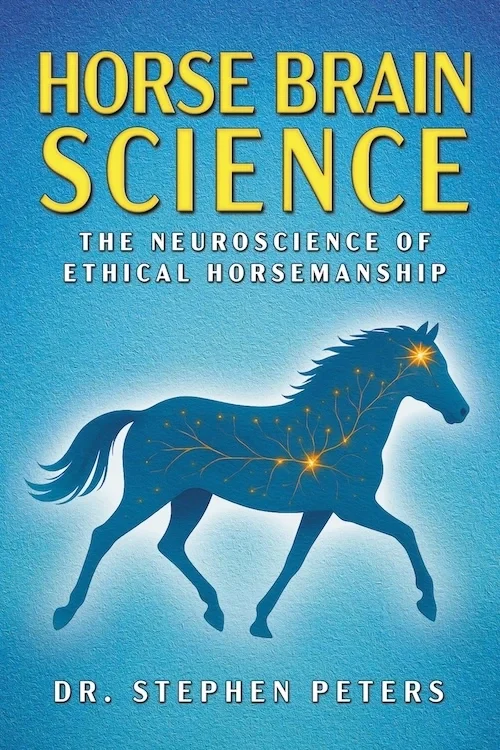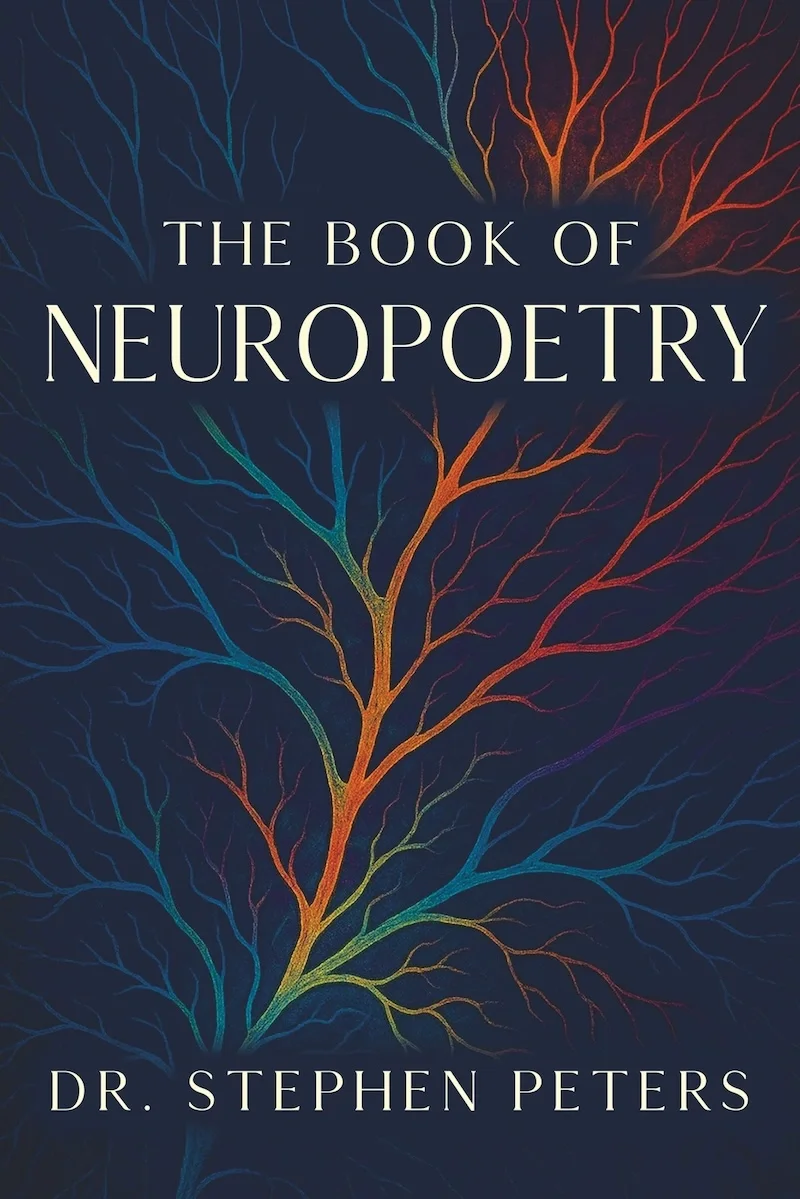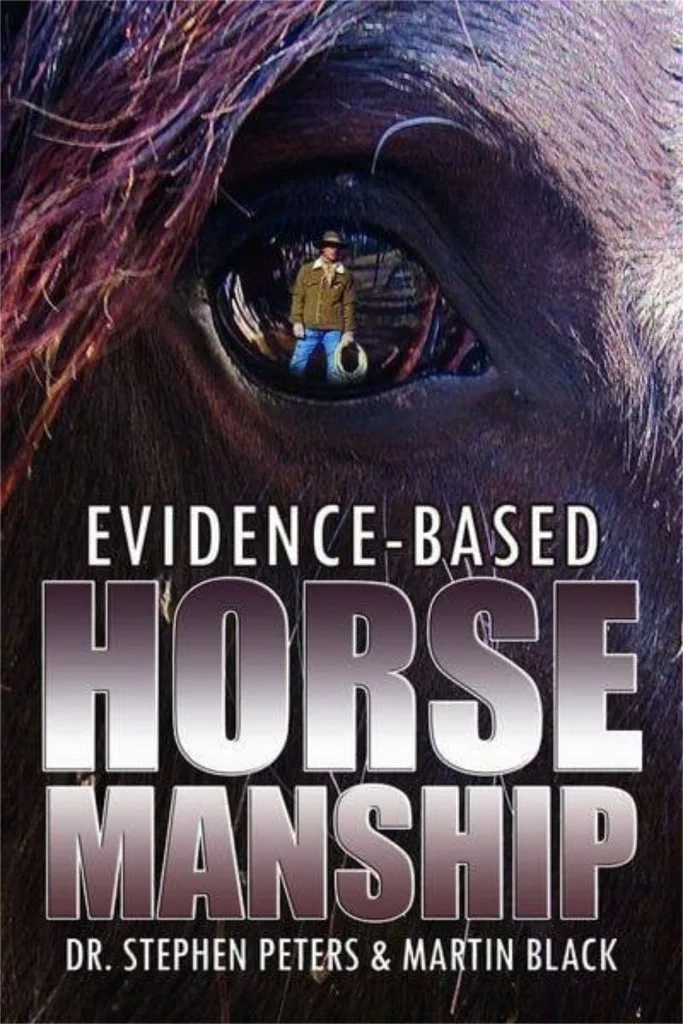
Books by
Dr. Steve Peters
— Equine & Human Neuroscientist —
Books by Dr. Stephen Peters
Books purchased through our website are shipped directly from our publisher in the USA only. All other purchases may be made through Amazon.
Horse Brain Science: The Neuroscience of Ethical Horsemanship
Horse Brain Science: The Neuroscience of Ethical Horsemanship is a rigorous, science-driven examination of how horses perceive, process, and respond to the world around them. Grounded in current research in neurobiology, brain anatomy, and behavioral science, this book reveals the underlying mechanisms that govern equine learning, emotional regulation, and behavioral expression.
By translating complex neuroscience into practical insights, it offers a clear, evidence-based framework for ethical horsemanship—one that prioritizes the horse’s mental welfare and natural learning processes. Designed for readers seeking a deeper clinical and scientific understanding of equine behavior, this book serves as a vital resource for trainers, veterinarians, behaviorists, and horse owners committed to compassionate and effective horse-human interactions.
“In ‘Horse Brain Science: The Neuroscience of Ethical Horsemanship,’ Dr. Peters distills decades of neuroscience, neuroendocrinology and equine brain study into practical wisdom that transforms how we interact with horses. Knowledge gives confidence and helps foster optimal relationships with horses. The more we know, the better we can do. This book is an indispensable guide for anyone committed to evidence-based, humane, as well as safe and effective horsemanship.”
— Dr. Andrew N. McLean, PhD
CEO, Equitation Science International (ESI) | Honorary Fellow & Trustee, International Society for Equitation Science (ISES) | Director, Racing Victoria Welfare Advisory Board | Director, Human Elephant Learning Programs Foundation (H-ELP) | Patron, Pony Club Australia | Member, IUCN SSC Asian Elephant Specialist Group.
The Book Of Neuropoetry
#1 on Amazon’s Best Seller list in the category of Inspirational Poetry eBooks
The Book of Neuropoetry offers a way to understand the nervous system through feeling, not just analysis. These poems are crafted to evoke the lived experience of neurobiological states—like fear, safety, learning, and memory—providing a direct, embodied sense of what these processes are like from the inside.
Rooted in the principles of neuro-aesthetics, the poems stand as works of art—meant to be felt as much as read. Select pieces include brief clinical postscripts that explain the neuroscience behind the imagery, offering clarity without reducing the emotional depth.
“Steve Peters’ Book of Neuropoetry is a feast for the senses. The poetry lands in your body; the poems about horses land in your heart. The clinical postscript after each poem satisfies the cerebral part of us that needs to know the why. A thoroughly enjoyable book to be experienced again and again.”
—Warwick Schiller
Globally recognized founder of Attuned Horsemanship, host of The Journey On Podcast, and author of The Principles of Training
”Lyrical, insightful, and full of fascinating glimpses into neurophysiology. Dr. Peters’s language is both sophisticated and engaging, making each poem a pleasure to savor and contemplate. A remarkable and original work.”
—Jan Mashman, M.D., Neurologist
Evidence Based Horsemanship
EBH is all about understanding how a horse’s brain works so we can communicate with them more clearly and effectively. It combines Dr. Peters’ knowledge of brain science with Martin Black’s real-world horsemanship experience to explain why horses respond the way they do. The book helps riders and trainers make better decisions based on what’s actually happening in the horse’s mind and body, rather than just following tradition. With a mix of science and practical tips, it shows how to build trust, improve training, and create a better partnership with your horse.
“Most horsemen agree that timing, feel, and balance are the holy trinity of horsemanship. They are also key elements of this book. The timing couldn’t be better. We are in the midst of a revival of interest in horsemanship. People are hungry for factual information and intelligent conversation. The feel of the book is genuinely refreshing and original. It is unpretentious, straightforward and informative. The balance is brilliant: scientific facts and the empirical evidence to support those facts assembled by two highly respected professionals in their respective disciplines.” – Randy Rieman
Note: Evidence-Based Horsemanship has been translated. Now available in print in Dutch, Spanish, and Polish.
Currently, translations into German are in progress.







